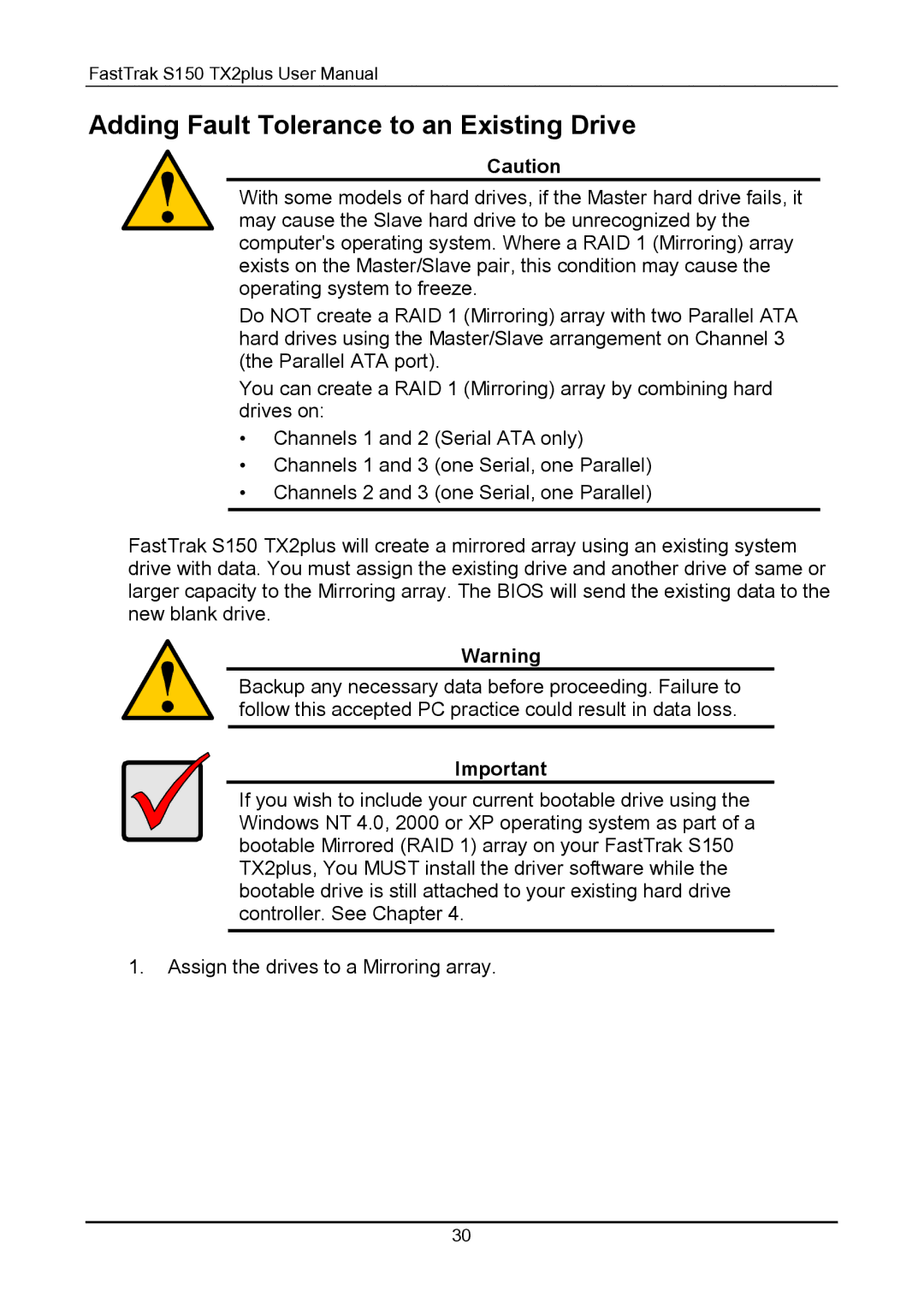
FastTrak S150 TX2plus User Manual
Adding Fault Tolerance to an Existing Drive
Caution
With some models of hard drives, if the Master hard drive fails, it may cause the Slave hard drive to be unrecognized by the computer's operating system. Where a RAID 1 (Mirroring) array exists on the Master/Slave pair, this condition may cause the operating system to freeze.
Do NOT create a RAID 1 (Mirroring) array with two Parallel ATA hard drives using the Master/Slave arrangement on Channel 3 (the Parallel ATA port).
You can create a RAID 1 (Mirroring) array by combining hard drives on:
•Channels 1 and 2 (Serial ATA only)
•Channels 1 and 3 (one Serial, one Parallel)
•Channels 2 and 3 (one Serial, one Parallel)
FastTrak S150 TX2plus will create a mirrored array using an existing system drive with data. You must assign the existing drive and another drive of same or larger capacity to the Mirroring array. The BIOS will send the existing data to the new blank drive.
Warning
Backup any necessary data before proceeding. Failure to follow this accepted PC practice could result in data loss.
Important
If you wish to include your current bootable drive using the Windows NT 4.0, 2000 or XP operating system as part of a bootable Mirrored (RAID 1) array on your FastTrak S150 TX2plus, You MUST install the driver software while the bootable drive is still attached to your existing hard drive controller. See Chapter 4.
1.Assign the drives to a Mirroring array.
30
